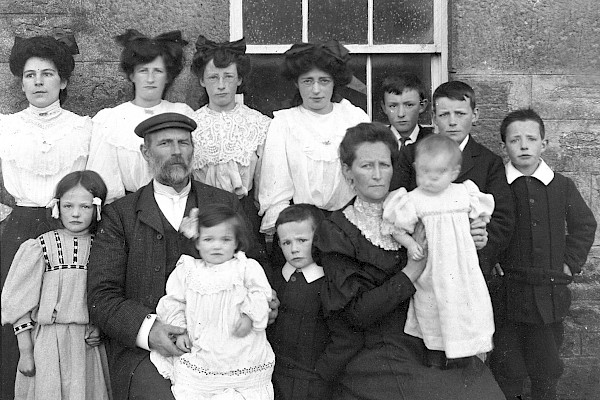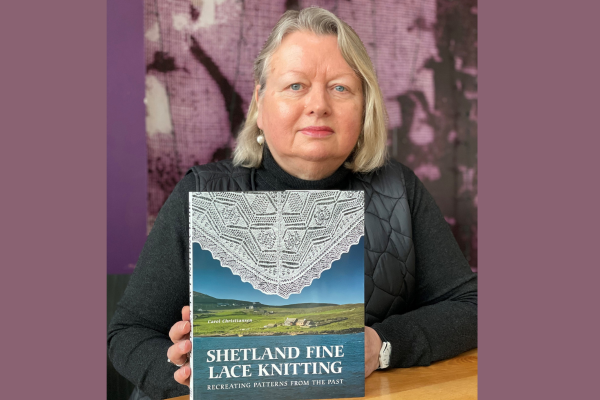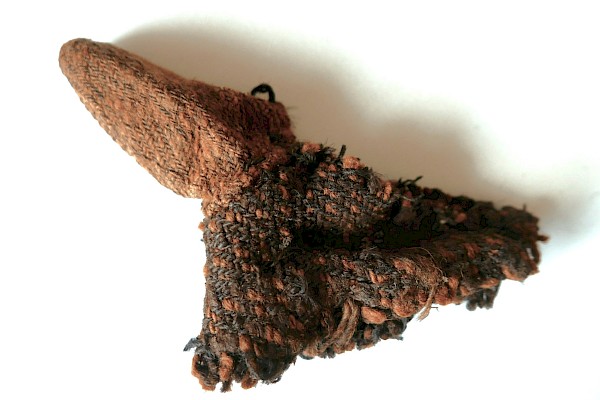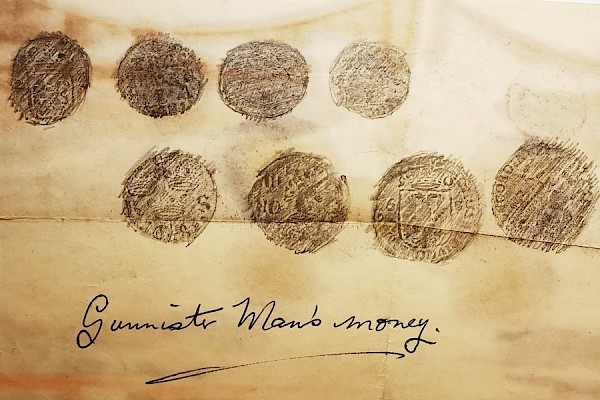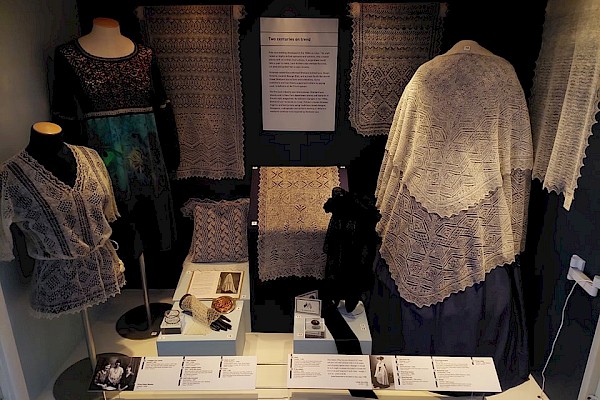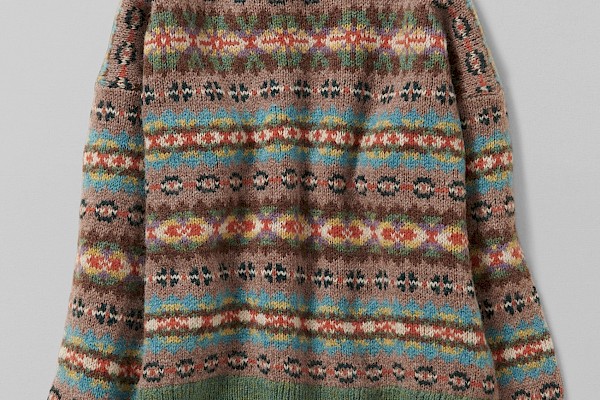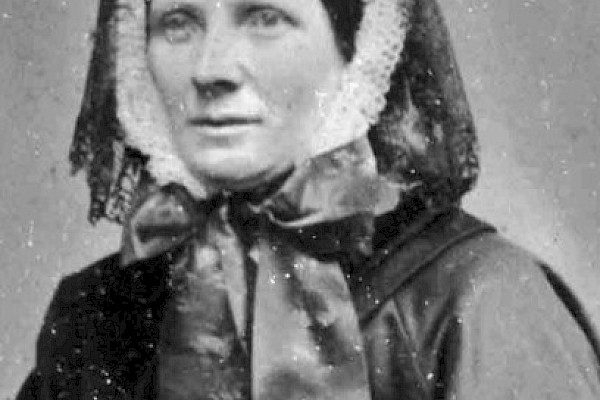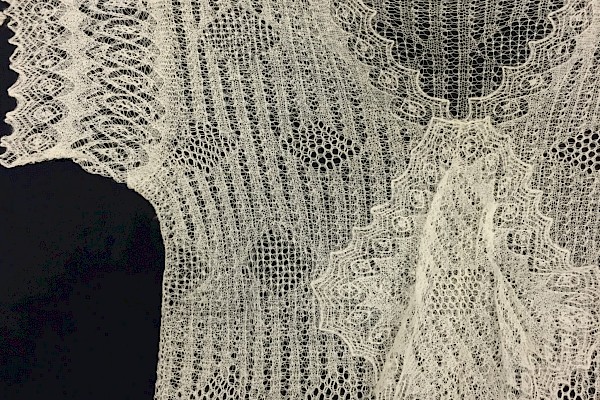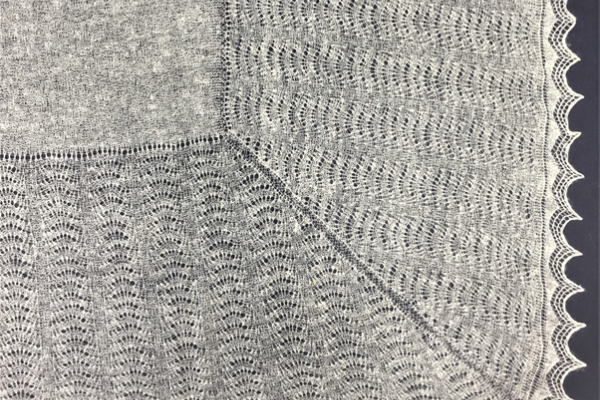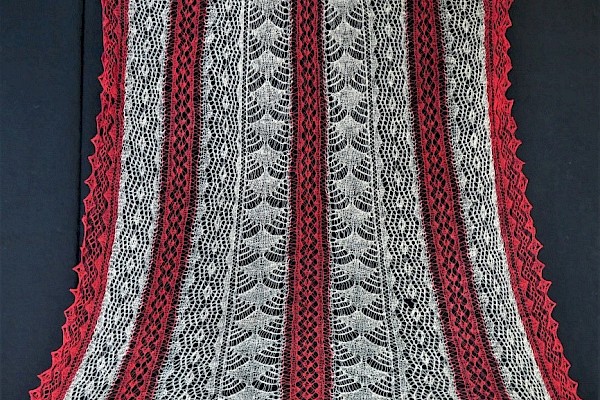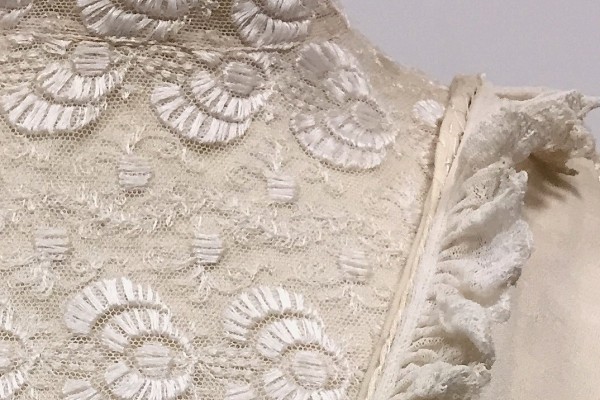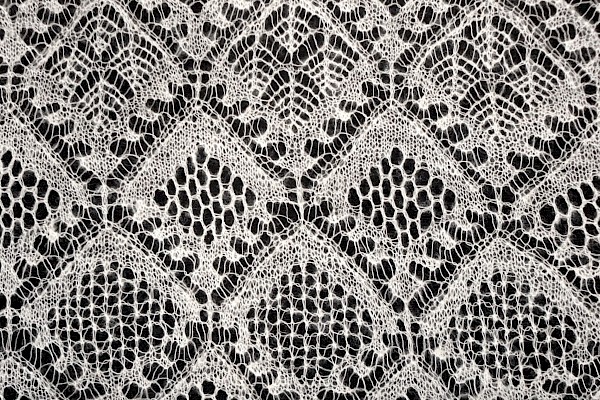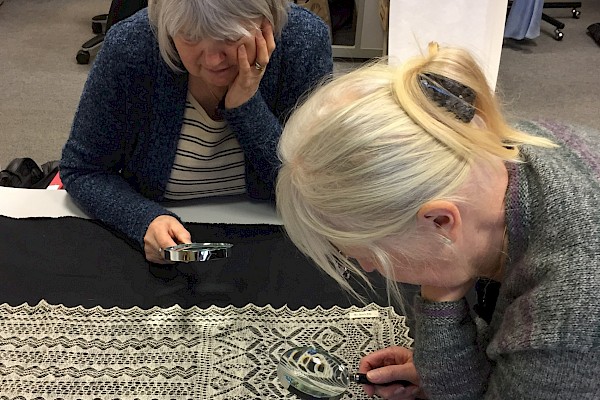A Rose by Any Other Name
According to Shakespeare “that which we call a rose, by any other name would smell as sweet” but can the same be said for knitted lace patterns? Back in January, when the Lace Assessment Project was in its early stages, Dr Carol Christiansen’s blog ‘What’s in a Name’ related the pitfalls of naming patterns within a piece of knitted lace. Now, more than six months on, the matter of conferring a name of an individual motif is still ongoing, although now with more insight.
The inspiration for Carol’s blog in January was the extensive conversations held within the project team about the practicalities of definitively naming a motif. As Carol outlined, not having a ‘name’ makes cataloguing an intricate and complex piece of knitted lace extremely challenging – and leads to scribbled notebook entries such as ‘oriental like motif’ and ‘squarish madeira with four bits’ – a description set to bamboozle even the most intrepid knitting expert.
An essential resource that has helped move the naming process on was an extensive collection of knitted lace samples, which we believe originated in Unst. As well as long lengths of adjoining motifs, there were hundreds of small individual swatches, and each had a handwritten label detailing the pattern name. The job of sorting, preparing and processing these samples has been gallantly undertaken by our project volunteer Helen Randall.

Helen preparing the swatches for blocking
Helen joined the team early on in 2019, having recently arrived in Shetland and was keen to get involved in the community. Helen’s role has been to individually record the samplers on a spreadsheet, photograph them and then block the pieces. The spreadsheet is to record the information on the accompanying tags which Helen carefully removes, before wetting the samplers for the blocking process.

Lace patterns, which may have originated in Unst: Diamonds and Waves; Crown Number 4; Prince of Wales Feathers and Miss Abernethy’s Peerie Pattern
The small lace designs helped us to build up a knowledge of the common terms used, but there were still discrepancies, where very similar patterns had different names. So, armed with detailed images from the lace objects in the Shetland Museum collection and the physical samplers we went out into the public to ask for guidance.
Initially the event, designed to help us in our quest to list the definitive names, was planned as being open to the public. However, we quickly realised that this would be too cumbersome and unlikely to produce comprehensive results, and so it was scaled down to an invited ensemble of lace knitting experts from the community. In July we met together for a positive, helpful discussion on what really is in a name and laid down foundations for cataloguing the Shetland Museum collection of lace knitting.

Dr Carol Christiansen showing a lace pattern at the pattern naming event
Through a lively morning of thoughts, opinions and memories, the intricacies of how a wool over, a twist or adding a plain row can create a variation of motif was examined and led into an exploration of how patterns became established within communities. It became obvious that some lace knitters would adjust a pattern to allow them to stamp their personal mark on the design.
As I recorded the names and techniques being discussed, I wondered at the image they conjured up. Some are romantic and capture the delicate nature of lace, such as the Basket of Daisies or The Little Fern, but others – eyelids, beetle and catapult to name a few - seem incongruous to the beautiful lace designs.
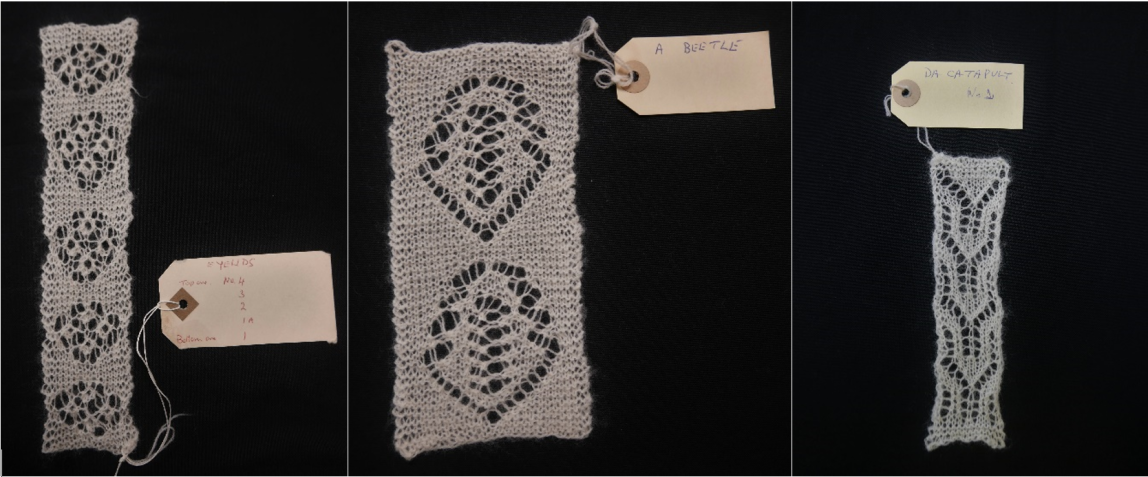
From left: Five variations of the Eyelid pattern; A Beetle and Da Catapult, Number 2
However, these names exemplify the pattern exactly and demonstrate the typically Shetland sensibility used when naming these motifs. The pragmatism of factual rather than fanciful has proved indispensable to us when cataloguing the lace knitting. Nonetheless, there are, as outlined by Carol back in January, numerous variations of patterns to complicate our task. Additionally, a motif in the north of Shetland may have a different moniker to the same pattern in the southern part of our isles…so in words not unlike Shakespeare’s - that which we call a rose, may have had any other name.
